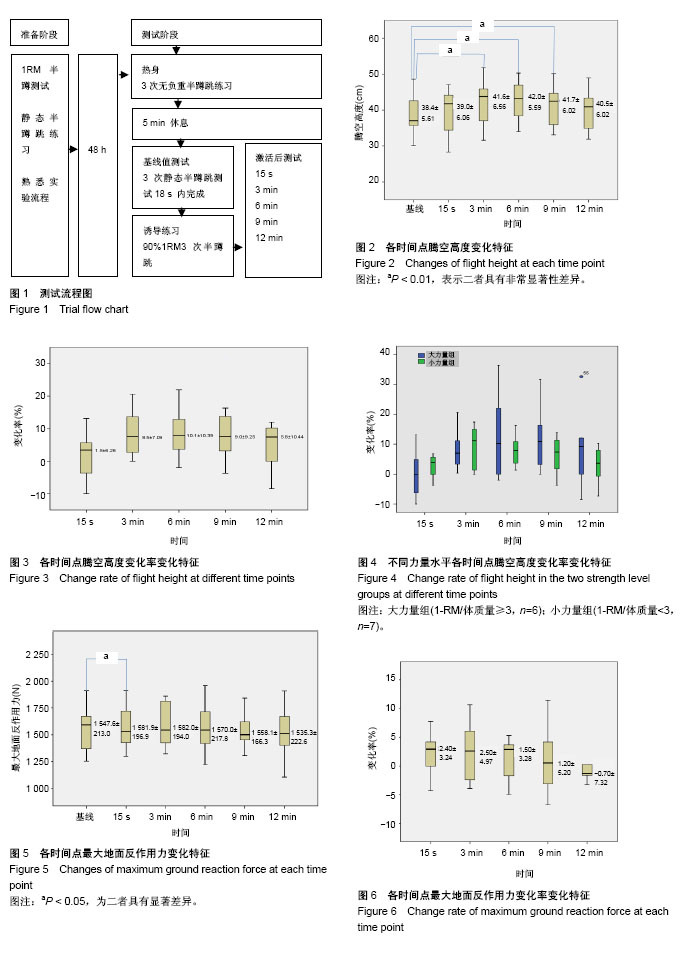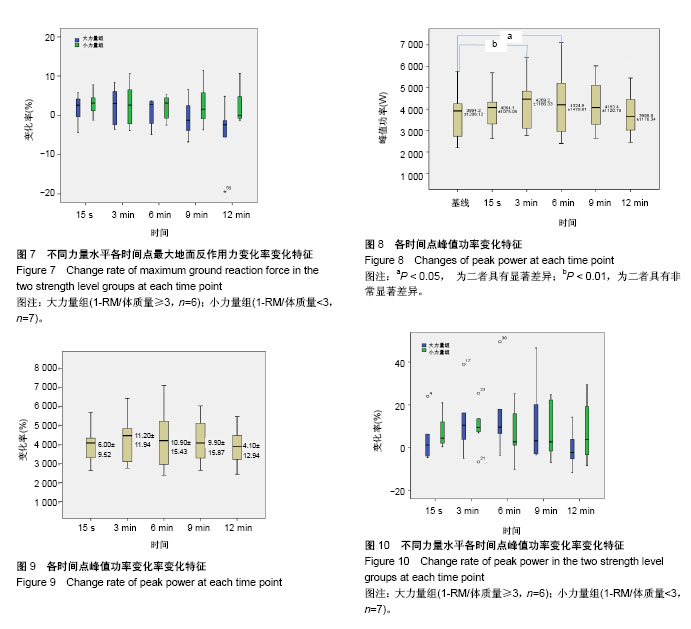| [1] Kilduff LP, Cunningham DJ, Owen NJ, et al. Effect of postactivation potentiation on swimming starts in international sprint swimmers. J Strength Cond Res. 2011;25(9): 2418-2423.[2] Linder EE, Prins JH, Murata NM, et al. Effects of preload 4 repetition maximum on 100-m sprint times in collegiate women. J Strength Cond Res. 2010;24(5):1184-1190.[3] Froyd C, Beltrami FG, Jensen J, et al. Potentiation and electrical stimulus frequency during self-paced exercise and recovery. J Hum Kinet. 2014;42(1):91-101. [4] Enoka RM, Fuglevand AJ. Motor unit physiology: some unresolved issues. Muscle Nerve. 2001;24(1):4-17.[5] Mahlfeld K, Franke J, Awiszus F. Postcontraction changes of muscle architecture in human quadriceps muscle. Muscle Nerve. 2004;29(4):597-600.[6] French DN, Kraemer WJ, Cooke CB. Changes in dynamic exercise performance following a sequence of preconditioning isometric muscle actions. J Strength Cond Res. 2003;17(4):678-685.[7] Berning JM, Adams KJ, DeBeliso M, et al. Effect of functional isometric squats on vertical jump in trained and untrained men. J Strength Cond Res. 2010; 24(9):2285-2289.[8] Esformes JI, Keenan M, Moody J, et al. Effect of different types of conditioning contraction on upper body postactivation potentiation. J Strength Cond Res. 2011; 25(1):143-148.[9] Weber KR, Brown LE, Coburn JW, et al. Acute effects of heavy-load squats on consecutive squat jump performance. J Strength Cond Res. 2008;22(3):726-730.[10] Hanson ED, Leigh S, Mynark RG. Acute effects of heavy-and light-load squat exercise on the kinetic measures of vertical jumping. J Strength Cond Res. 2007;21(4):1012-1017.[11] Mitchell CJ, Sale DG.. Enhancement of jump performance after a 5-RM squat is associated with postactivation potentiation. Eur J Appl Physiol. 2011; 111(8):1957-1963.[12] Cochrane DJ, Stannard SR, Firth EC, et al. Acute whole-body vibration elicits post-activation potentiation. Eur J Appl Physiol. 2010;108(2):311-319.[13] Jordan M, Norris S, Smith D, et al. Acute effects of whole-body vibration on peak isometric torque, muscle twitch torque and voluntary muscle activation of the knee extensors. Scand J Med Sci Sports. 2010;20(3):535-540.[14] Baudry S, Klass M, Duchateau J. Postactivation potentiation of short tetanic contractions is differently influenced by stimulation frequency in young and elderly adults. Eur J Appl Physiol. 2008;103(4):449-459.[15] Sygulla KS, Fountaine CJ. Acute post-activation potentiation effects in NCAA Division II female athletes. Int J Exerc Sci. 2014; 7(3):212-219.[16] Sayers SP, Harackiewicz DV, Harman EA, et al. Cross-validation of three jump power equations. Med Sci Sports Exerc. 1999;31(4):572-577.[17] Seitz LB, de Villarreal ES, Haff GG. The temporal profile of postactivation potentiation is related to strength level. J Strength Cond Res. 2014;28(3):706-715.[18] Nibali ML, Chapman DW, Robergs RA, et al. Considerations for determining the time course of post-activation potentiation. Appl Physiol Nutr Metab. 2015;40(11):1163-1170. [19] Witmer CA, Davis SE, Moir GL. The acute effects of back squats on vertical jump performance in men and women. J Sports Sci Med. 2010;9(2):206-213.[20] Khamoui AV, Brown LE, Coburn JW, et al. Effect of potentiating exercise volume on vertical jump parameters in recreationally trained men. J Strength Cond Res. 2009;23(5): 1465-1469. [21] Reardon D, Hoffman JR, Mangine GT, et al. Do changes in muscle architecture affect post-activation potentiation? J Sports Sci Med. 2014;13(3):483-491.[22] Kubo K, Kanehisa H, Kawakami Y, et al. Effects of repeated muscle contractions on the tendon structures in humans. Eur J Appl Physiol. 2001;84(1):162-166. [23] Gossen ER, Sale DG. Effect of postactivation potentiation on dynamic knee extension performance. Eur J Appl Physiol. 2000;83(6):524-530.[24] Kilduff LP, Bevan HR, Kingsley MI, et al. Postactivation potentiation in professional rugby players: optimal recovery. J Strength Cond Res. 2007;21(4):1134-1138.[25] Kilduff LP, Owen N, Bevan H, et al. Influence of recovery time on post-activation potentiation in professional rugby players. J Sports Sci. 2008;26(8):795-802.[26] Bevan HR, Owen NJ, Cunningham DJ, et al. Complex training in professional rugby players: Influence of recovery time on upper-body power output. J Strength Cond Res. 2009;23(6): 1780-1785.[27] Ruben RM, Molinari MA, Bibbee CA, et al. The acute effects of an ascending squat protocol on performance during horizontal plyometric jumps. J Strength Cond Res. 2010; 24(2):358-369.[28] Hamada T, Sale DG, MacDougall JD, et al. Postactivation potentiation, fiber type, and twitch contraction time in human knee extensor muscles. J Appl Physiol (1985). 2000;88(6): 2131-2137.[29] Weber KR, Brown LE, Coburn JW, et al. Acute effects of heavy-load squats on consecutive squat jump performance. J Strength Cond Res. 2008;22(3):726-730.[30] Horan SA, Watson SL, Lambert C, et al. Lunging Exercise Potentiates a Transient Improvement in Neuromuscular Performance in Young Adults. J Strength Cond Res.2015; 29(9):2532-2537.[31] Khamoui AV, Brown LE, Coburn JW, et al. Effect of potentiating exercise volume on vertical jump parameters in recreationally trained men. J Strength Cond Res. 2009;23(5): 1465-1469.[32] Esformes JI, Cameron N, Bampouras TM. Postactivation potentiation following different modes of exercise. J Strength Cond Res. 2010;24(7):1911-1916.[33] Robbins DW. Postactivation potentiation and its practical applicability. J Strength Cond Res. 2005;19(2):453-458.[34] Duthie GM, Young WB, Aitken DA. The acute effects of heavy loads on jump squat performance: an evaluation of the complex and contrast methods of power development. J Strength Cond Res. 2002;16(4):530-538.[35] Newton RU, Kraemer WJ. Developing explosive muscular power: implications for a mixed methods training strategy. J Strength Cond Res.1994;16(5):20-31.[36] Stone MH, O'Bryant HS, McCoy L, et al. Power and maximum strength relationships during performance of dynamic and static weighted jumps. J Strength Cond Res. 2003;17(1): 140-147.[37] Rixon KP, Lamont HS, Bemben MG.. Influence of type of muscle contraction, gender, and lifting experience on postactivation potentiation performance. J Strength Cond Res.2007; 21(2):500-505. |
.jpg) 文题释义:
激活后增强效应:是一种由预先短时间次最大强度抗阻练习引起的肌肉发力速度或爆发力急性增加的生理现象。
1次最大重复量:是指能够完整进行的、全活动范围的、最大努力只能进行 1次动作的负重质量。
文题释义:
激活后增强效应:是一种由预先短时间次最大强度抗阻练习引起的肌肉发力速度或爆发力急性增加的生理现象。
1次最大重复量:是指能够完整进行的、全活动范围的、最大努力只能进行 1次动作的负重质量。.jpg) 文题释义:
激活后增强效应:是一种由预先短时间次最大强度抗阻练习引起的肌肉发力速度或爆发力急性增加的生理现象。
1次最大重复量:是指能够完整进行的、全活动范围的、最大努力只能进行 1次动作的负重质量。
文题释义:
激活后增强效应:是一种由预先短时间次最大强度抗阻练习引起的肌肉发力速度或爆发力急性增加的生理现象。
1次最大重复量:是指能够完整进行的、全活动范围的、最大努力只能进行 1次动作的负重质量。

.jpg) 文题释义:
激活后增强效应:是一种由预先短时间次最大强度抗阻练习引起的肌肉发力速度或爆发力急性增加的生理现象。
1次最大重复量:是指能够完整进行的、全活动范围的、最大努力只能进行 1次动作的负重质量。
文题释义:
激活后增强效应:是一种由预先短时间次最大强度抗阻练习引起的肌肉发力速度或爆发力急性增加的生理现象。
1次最大重复量:是指能够完整进行的、全活动范围的、最大努力只能进行 1次动作的负重质量。